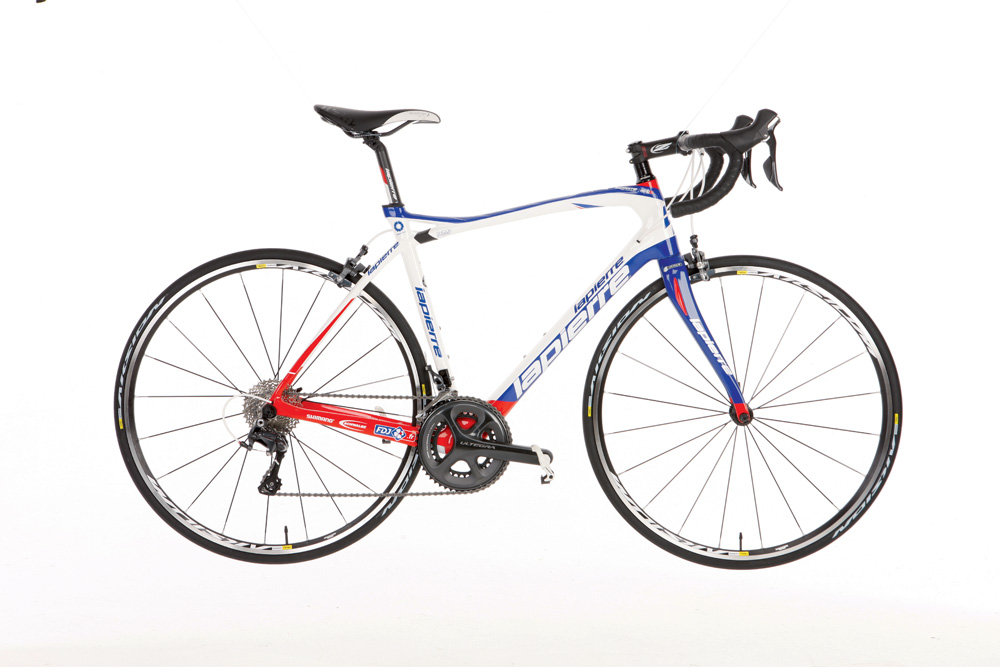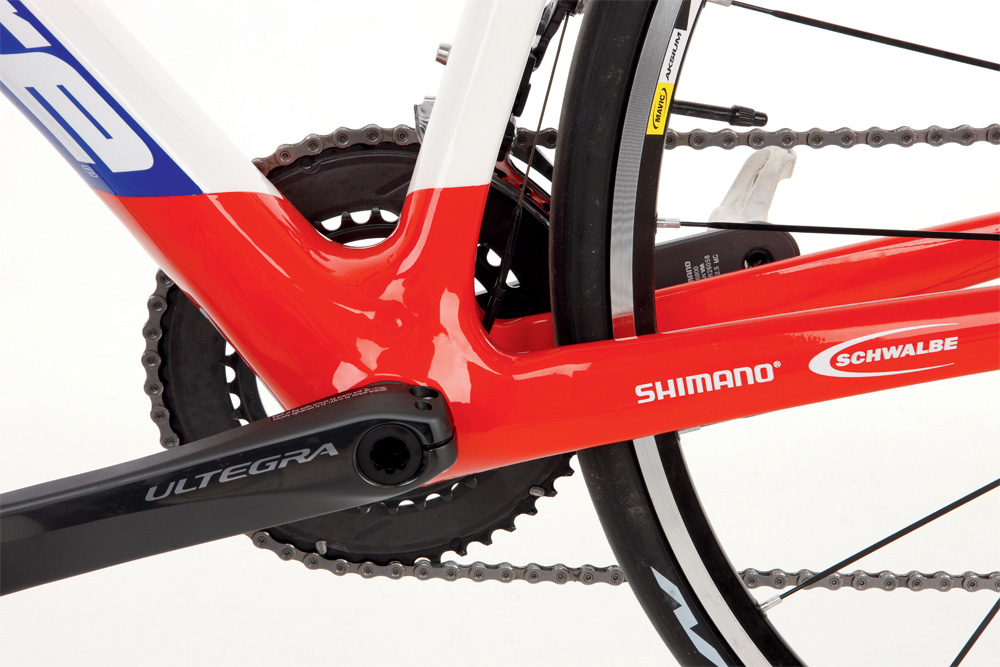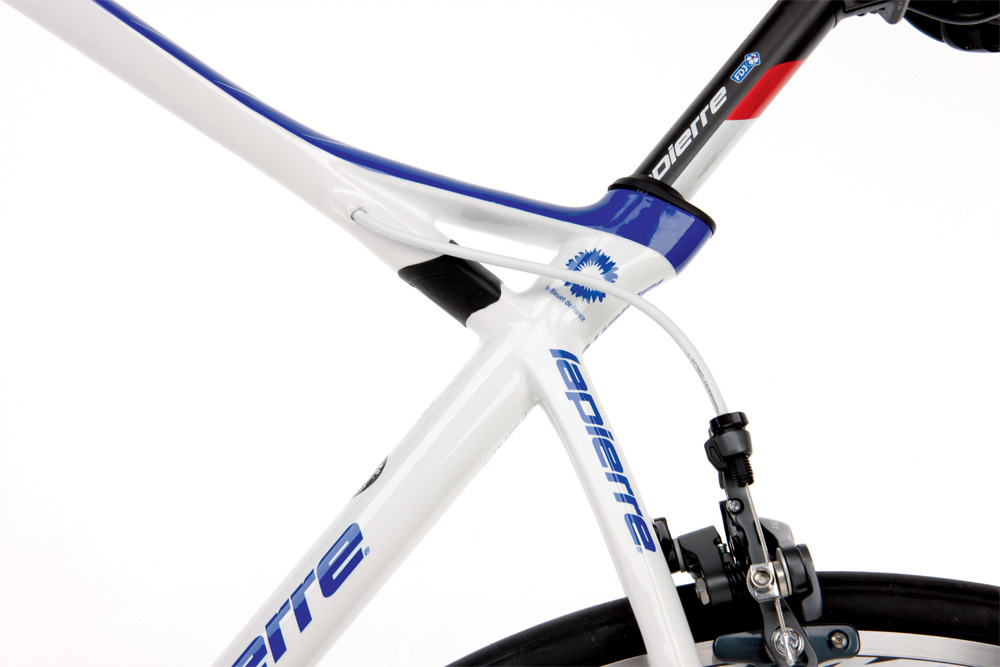Lapierre Pulsium 500 road bike review
The mid-range option in Lapierre's latest offering of road bikes, the 500 is a comfortable ride that will suit racers and sportive riders alike

What the Pulsium does well can’t be read on a geometry sheet or measured on a set of scales. It’s a real rider’s bike, and for that reason we love it. Comfort and performance, it would seem, aren’t mutually exclusive.
-
+
Comfortable bike for long rides and tough races
-
+
Shimano Ultegra equipped for smooth transmission and confident braking
-
-
Slightly slower than a pure race machine
-
-
Entry-level wheels on a mid-range bike
You can trust Cycling Weekly.
The latest addition to Lapierre’s 13-strong endurance road bike range, the Pulsium comes in three different flavours. Starting with the £1,699.99, Shimano 105-equipped 300 through to the tasty £3,100 Shimano Ultegra Di2-equipped 700, the range is comprehensive, and the 500 sits slap-bang in the middle, in terms of price and specification.
One for the race fans, the patriotic FDJ.fr team replica paintjob suits the frame well and leaves no one in any doubt as to the Pulsium’s country of origin. The frameset itself is new and, having been developed by a squad of hard-riding pros that includes Classics specialist Arnaud Démare, it is clear that a lot of work has gone into the striking design to ensure that light work is made of rough roads and cobbles.

Lapierre has come up with its own way of dealing with poor road surfaces, which works in a similar way to the Zertz inserts on Specialized’s Roubaix and the IsoSpeed decoupler found on Trek’s Domane. Known as ‘SAT’ (Shock Absorption Technology), the top tube splits before the seat tube with the lower of the two ‘branches’ containing an elastomer damper to assist in providing that much-needed give in the rear end.
Read any sales blurb on ‘endurance’ bikes and it’s highly likely the words ‘vertical compliance’ and ‘lateral stiffness’ will feature. What this actually means is a comfortable bike that gives little away when it comes to transferring your efforts to the road. Naturally there is some sacrifice in the name of comfort when it comes to wasted watts, but minimising this loss is what makes a classic Classics bike. And we think that Lapierre has done a fine job.
As well as the SAT damper in the top tube, the top tube itself is curved to allow a degree of flex. Similarly, the seatstays act like leaf springs, while the front fork offset has been changed from the Sensium’s 43° to 50° — according to Lapierre, this gives the same effect as those shapely but slender seatstays. The 27.2mm seatpost also offers a claimed 27 per cent more vertical compliance than the Sensium. Topped with the relatively sumptuous Fizik Aliante saddle, it’s clear that Lapierre wants this bike to appeal to long-distance sportive riders, as well as prospective Classics contenders.

Enhancing comfort has been well considered, then. But what about stiffness? The ‘PowerBox’ technology found in Lapierre’s top-end race bikes also features in the Pulsium. What this actually means is an oversized head tube, down tube and chainstays that all use the same design and carbon-fibre length as the Xelius EFI to give similar figures when it comes to lateral rigidity.
The finish is as stylish as befits the price, and the inclusion of the Zipp Service Course bars and stem is a welcome bonus — the former offering a mid-sized drop and good ergonomics for most riders, the latter keeping sprinters happy, with plenty of stiffness for big efforts.
Shimano’s 11-speed version of its second-tier Ultegra groupset has received nothing but praise since its 2013 launch. So we won’t bang on about it. Suffice it to say, the brakes are superb, shifting is never anything other than crisp and precise and, 18 months on, we now know that reliability isn’t an issue either.
The ride
Stability is perhaps the first thing that strikes you about the Pulsium. The mix of a fairly lazy fork offset and a frame that flexes in all the right places means assured if not pin-sharp steering. Not that there’s anything vague about the way the Lapierre Pulsium steers or any lack of accuracy where it really matters on fast, sweeping descents; it’s just a little slower than a pure race bike.
The riding position hints towards a more relaxed ride, too. The head tube is fairly tall at 165mm on the size 52 — the kind of length you might expect on a racing frame two sizes larger. It wasn’t a problem for us, and while we rather enjoyed the ‘slammed’ look, those lucky enough to have the flexibility to warrant a brutal saddle-to-bar drop may need to factor this in when choosing a suitable frame size.
All those claims of comfort and efficiency certainly seem to ring true on the move. Despite the deadening effect of the SAT elastomer damper, the Pulsium feels lively and urgent.
At a smidge over 8kg, it’s a surprisingly capable climber and carries its weight well, the huge 32t bottom gear giving the most fatigued legs a fighting chance on all but the steepest of gradients. There are, however, a couple of the usual drawbacks that seem to afflict a two-grand bike: namely the wheels.
The Mavic Aksium wheelset is a good, inexpensive choice for winter training and, shod with 25c tyres, adds another layer of ride comfort. But an upgrade to something a little stiffer and lighter would doubtless bring the best out of the Pulsium — it’s just a shame so many manufacturers insist on speccing entry-level wheels on their mid-range bikes.
Conclusion
While traditionalists might look on aghast at a contemporary frame design that borders on radical with its bolder-than-bold colour scheme, it’s hard to have anything but praise for Lapierre in its creation of a real-world bike for our real-world roads. OK, it won’t pique the interest of the hardened criterium racer, nor will it appear on the radar of the weight weenie who seeks out the longest climbs on the smoothest of tarmac.

Thank you for reading 20 articles this month* Join now for unlimited access
Enjoy your first month for just £1 / $1 / €1
*Read 5 free articles per month without a subscription

Join now for unlimited access
Try first month for just £1 / $1 / €1
Get The Leadout Newsletter
The latest race content, interviews, features, reviews and expert buying guides, direct to your inbox!
Founded in 1891, Cycling Weekly and its team of expert journalists brings cyclists in-depth reviews, extensive coverage of both professional and domestic racing, as well as fitness advice and 'brew a cuppa and put your feet up' features. Cycling Weekly serves its audience across a range of platforms, from good old-fashioned print to online journalism, and video.
-
 'I'll take a top 10, that's alright in the end' - Fred Wright finishes best of British at Paris-Roubaix
'I'll take a top 10, that's alright in the end' - Fred Wright finishes best of British at Paris-RoubaixBahrain-Victorious rider came back from a mechanical on the Arenberg to place ninth
By Adam Becket Published
-
 'This is the furthest ride I've actually ever done' - Matthew Brennan lights up Paris-Roubaix at 19 years old
'This is the furthest ride I've actually ever done' - Matthew Brennan lights up Paris-Roubaix at 19 years oldThe day's youngest rider reflects on 'killer' Monument debut
By Tom Davidson Published
-
 'One of the hardest races I've ever done in my life' - Tadej Pogačar finishes runner-up on Paris-Roubaix debut after crash
'One of the hardest races I've ever done in my life' - Tadej Pogačar finishes runner-up on Paris-Roubaix debut after crashWorld champion reacts to 'extremely hard' battle with Mathieu van der Poel
By Tom Davidson Published